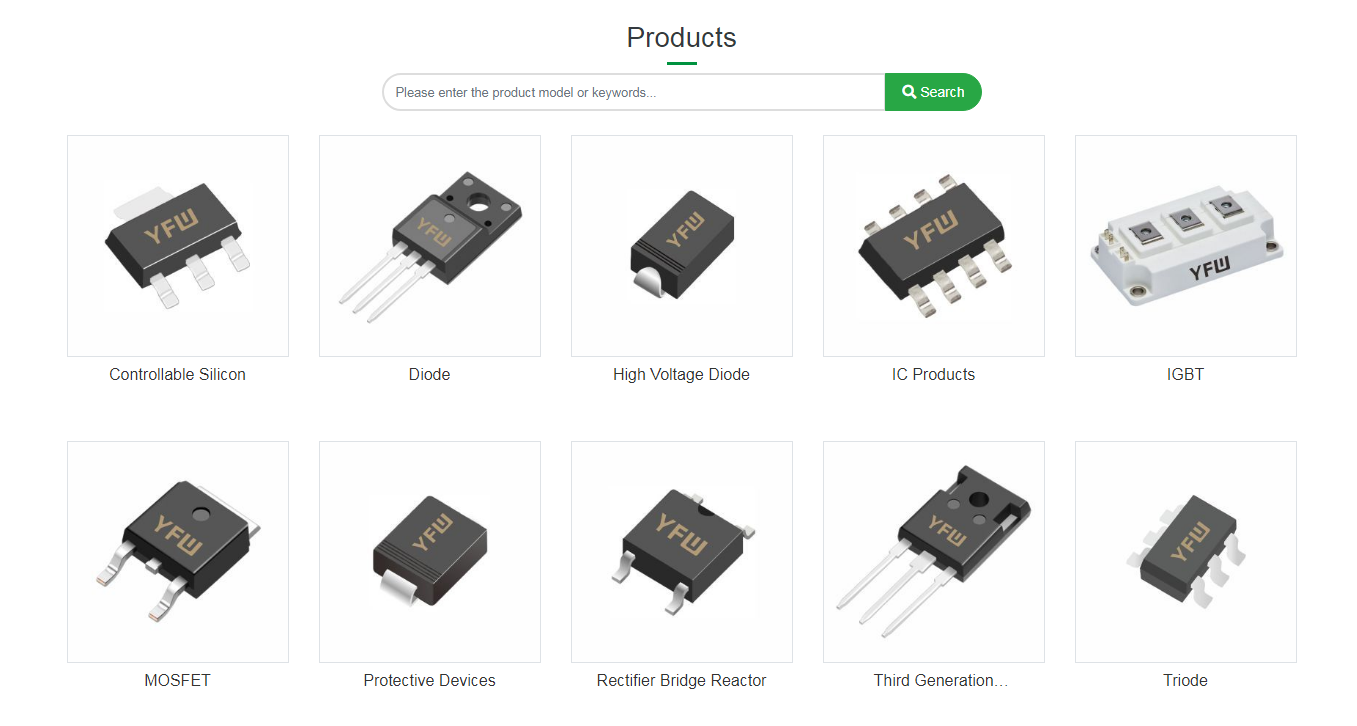Date:2025-03-18 Categories:Industry News Hits:892 From:Guangdong Youfeng Microelectronics Co., Ltd(YFW)
A Bipolar Junction Transistor (BJT) is a common electronic device widely used in amplifying, switching, and stabilizing circuits. consists of three semiconductor materials with different doping types, namely P-type semiconductor, N-type semiconductor, and P-type semiconductor, forming two PN junctions. BJTs be divided into NPN and PNP types according to different doping types. I. Structure The structure of a BJT includes three regions: the emitter, the, and the collector. In an NPN BJT, the emitter and base are N-type semiconductors, and the collector is a P-type semiconductor; a PNP BJT, the emitter and base are P-type semiconductors, and the collector is an N-type semiconductor. The junction between the emitter the collector is called the emitter junction, and the junction between the base and the collector is called the collector junction. II. Working Principle The working principle of aJT is based on two basic physical effects: the drift and diffusion of holes in P-type materials and electrons in N-type materials under the action of an electric field. forward bias, the emitter junction is forward biased, forming a state of electron injection into the emitter region; the base junction is reverse biased, limiting the state of electron injection the base region. When the electrons injected from the emitter region recombine with the holes injected from the base region, a current amplification effect is produced. III. BT Operating Modes A BJT has three operating modes: amplification mode, cutoff mode, and saturation mode. In the amplification mode, the emitter junction of theJT is forward biased, and the base junction is reverse biased. When an input signal is applied to the base, the current in the base region also changes due to the change the input signal. This change will cause a change in the current in the emitter region, which in turn affects the current in the collector region. By amplifying the input signal the output signal is amplified. In the cutoff mode, the emitter junction and the base junction of the BJT are reverse biased. At this time, regardless of the of the input signal, the current at the base is very small, which affects the current at the emitter region and the collector region, so that the BJT is in cutoff state. In the saturation mode, the emitter junction and the base junction of the BJT are forward biased. When an input signal is applied to the base, current in the base region changes accordingly, causing a change in the current in the emitter and collector regions. At this time, the BJT is in a saturated state.IV. BJT Characteristics The BJT has many important characteristics, such as amplification factor, input resistance, output resistance, switch speed, etc. The amplification refers to the ratio of the input signal to the output signal and is used to measure the amplifying ability of the BJT. It can be calculated by measuring the current or of the input signal and the output signal. The input resistance refers to the resistance property that the input signal needs to overcome, which depends on the structure and doping concentration of BJT. The larger the input resistance, the greater the resistance that the input signal needs to overcome, making it easier for the input signal to pass through the BJT The output resistance refers to the resistance property that the output signal needs to overcome, which also depends on the structure and doping concentration of the BJT. The smaller the output, the less resistance the output signal needs to overcome, making it easier for the output signal to pass through the BJT. The switching speed refers to the speed at which BJT switches from the cutoff mode to the saturation mode or from the saturation mode to the cutoff mode. It is usually determined by the structural characteristics of the BJT

Previous:What is a Schottky diode and its basic structure, advantages and , reasons for damage,
Next:NZT560A 1A 80V SOT-223 Marked NZT560A Small Signal Transistor Y Micro Brand